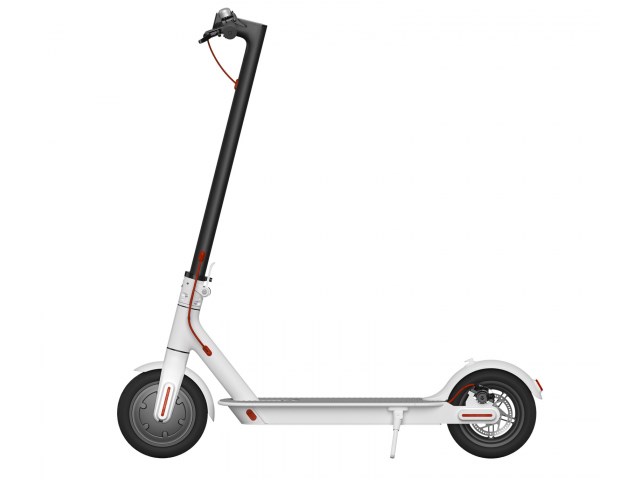Battery life is typically one to two hours and depends on many factors:
- battery power reserve (Wh), i.e. capacity (Ah) and voltage (V);
- battery type: if you compare the lithium and lead-acid versions with the same characteristics, the lithium will work longer without recharging;
- workmanship, ie From the manufacturer;
- average movement speed;
- terrain: with mountainous terrain and frequent uphill climbs, the time is reduced;
- driving style – sharp accelerations to maximum speed significantly reduce battery life, sometimes by 2-3 times, while inertia increases the power reserve;
- load weights: the greater the weight of the person and the load carried, the shorter the battery life;
- battery duration;
- using regenerative braking mode;
- room temperature: In cold climates, battery life is often shortened.
To roughly determine the distance a scooter can travel with a fully charged brand-name lithium battery (power reserve), you should divide the power reserve in Wh by 10.
Example. If the lithium battery has a capacity of 10 Ah, at a voltage of 48 V, then its energy reserve will be 10×48 = 480 Wh. Consequently, the power reserve, in this case, will be equal to 480/10 = 48 km. Please note that this is an approximate value and is influenced by all the factors listed above. The actual distance maybe 40 or 55 km. If you start driving with an incomplete charge, of course, the driving distance will be shorter.
It is better to keep track of the operating time and power reserve on different terrains and at different speeds. This will help you more accurately understand your battery’s capabilities and predict the power reserve in a given situation. In the beginning, it is better not to travel to the limit distances close to the distance calculated by the formula, it is better to always have a load reserve. Otherwise, the battery may run out before its time: you will have to reach a section of the road, pushing with your foot or walking.
Do not forget that additional electrical appliances, such as headlights, position lights and others, also consume current when they are turned on, which naturally reduces the power reserve.
If the motor and controller support regenerative braking mode, great, in this case, the run time can be increased by recharging the battery with the braking energy. In this mode, when braking, the motor emits energy to charge the battery. In addition, the brake pads wear less.
To increase the power reserve, we recommend using power sparingly, coasting if possible, and avoiding sudden accelerations and decelerations. When planning a route in advance, it is best to avoid roads with long climbs. You should start up and get the first acceleration by pushing off with one foot off the ground surface, with the other standing on the platform, just like on a normal scooter. At a speed of about 5 km/h, the motor starts automatically with both feet on the platform.
ADVANTAGES AND DISADVANTAGES OF ELECTRIC SCOOTERS
Modern technologies in the field of vehicles for urban movement offer users not only electric scooters but also gyroscopes, unicycles, and electric bicycles. Each tool has its own supporters and has pros and cons.
THE ADVANTAGES OF AN ELECTRIC SCOOTER COMPARED TO OTHER UNITS ARE:
- Ease of management;
- high speed, which in some models can even reach 50 km / h;
- a wide range of models, for example, with a seat, which reduces the load on the back and legs during long trips;
- the presence of lighting allows you to travel even at night;
- saving time when moving around the city;
- the compactness of folding models;
- lightweight
- load stability.
THE DISADVANTAGES OF THIS VEHICLE CAN BE CONSIDERED:
- Difficulty driving over rough terrain
- the impossibility of making long trips without recharging;
- most models equipped with an electric motor do not allow foot pushing
when the charge level is low.
Also on the plus side is ease of maintenance. It is not necessary to have any special education to know how to disassemble an electric scooter. The wheels are removed by unscrewing the retaining nuts, and the body is disassembled by unscrewing the standard screws with convenient handles.
MAIN CHARACTERISTICS OF ELECTRIC MODELS.
Before deciding whether to buy an electric scooter, you need to decide the purpose of its use (who will drive it, since there are differences between models for children and adults ) and thoroughly study the main characteristics of such
vehicles:
- Energy. This is the main parameter that determines the speed of movement. Everything will depend on the battery and the motor. Adult models are usually equipped with 250W motors, allowing them to reach speeds of up to 25 km/h. Children’s models are less powerful and faster. It is also worth noting that scooters that work on the “motor-wheel” principle are equipped with motors of no more than 150 watts.
- Weight. Equally important is the weight of an electric scooter. This indicator will also depend on the orientation of the model. Adult scooters can weigh up to 50 kg, and children’s scooters do not exceed 13 kg in this parameter. Standard weight starts at 8kg.
- Lift the load. Most of the models on the market have a load capacity of 70 kg, which makes the use of such a vehicle equally comfortable for both children and adults. There are more advanced designs with a higher strength to support more weight.
- Wheel diameter. The size of the wheel will affect the float and the speed that the scooter will develop. But excessively large wheels do not have the best effect on maneuverability. For driving on paved roads, an 8-inch gauge is considered optimal. If you plan on moving over rough terrain more, then it’s best to look at scooters with a 12-inch wheel radius, with tires that have a deep pneumatic tread.
- Battery capacity. A parameter that determines the power reserve of the device. The higher the battery capacity, the longer you can travel without recharging. For adult scooter models, the minimum power is 10 A*h, which is enough to cover a distance of 35 km. It should be noted here that larger batteries require longer charging times, which can be up to 12 hours.
- Dimensions. The purchase of an electric scooter entails the problem of its storage. Therefore, it is better to pay attention to folding models that can be conveniently placed in a closet or on a balcony in winter. How to fold the electric scooter? As usual. There is a pivot arm near the steering column that lowers the fork to the deck or sole, folding the device in half. Some manufacturers complete their models with a special bag for transport.
- Additional Options Depending on the cost of the vehicle, you may have additional options in the kit. The most common is a removable seat, which is very comfortable on long trips. In addition, the scooter can be equipped with a headlight, a trunk, and a screen that displays driving parameters.




